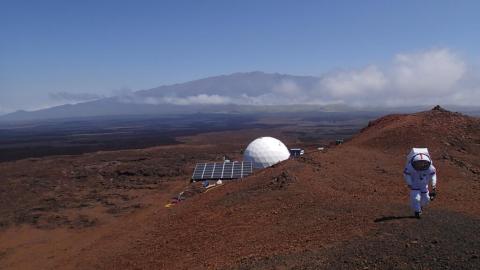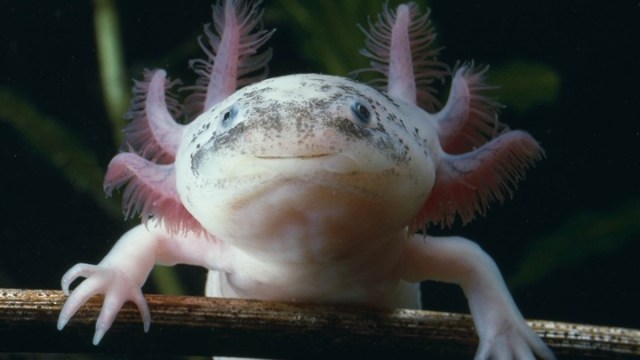Six Crew Members Emerge from Year-Long Mars Simulation

A crew has emerged from a year-long Mars simulation. On August 29, the six members of the (Hawaii Space Exploration Analog and Simulation (HI-SEAS) IV crew came back to Earth, walking out of their Mars habitat without space suits. The purpose of this and previous studies have been to examine crew cohesion to prepare for a Mars mission. But this mission was special–it was the longest NASA and Hi-SEAS has done, yet.
Prior missions of this nature have been either six or eight months long. The European Space Agency (ESA) has conducted a similar study in Antarctica with the same purpose of anticipating breaks in the human condition during long periods of isolation.
While there are many technological hurdles a Mars mission offers from converting Martian ice to drinkable water and oxygen and protecting astronauts from cosmic rays, there’s a human factor which must be accounted for.
“More than anything it’s just kind of keeping yourself from getting bored and dealing with cabin fever,” said crew member Tristan Bassingthwaighte during an interview on Periscope.
But what if astronauts had to endure an 18-month long journey to the Red Planet? One study done back in 2010 examined just that. “The influences of long-term confinement on the human brain are barely investigated,” the researchers write.
From June 3rd, 2010 to November 4th, 2011 six men were confined to a mock-up space craft as part of the Mars500 program. They found there was a reduction in brain activity and a heightened level of stress—not a good combination for space travel. However, the researchers noted the damage was not permanent. When the participants emerged from their isolation, their levels returned to normal.
The researchers suggest the effects could be offset by exercise, so NASA should pack a treadmill.
It’ll take a certain kind of person to withstand such an environment. “You have to be able to adapt to others,” HI-SEAS IV crewmember Christiane Heinicke said.
LIVE on #Periscope: #hiseas crew member @mars_christianehttps://t.co/A9KYVylyCm
— University of Hawaii (@UHawaiiNews) August 28, 2016
Researchers are continuing to understand out how humans would adjust to confinement with others for a long mission to Mars. NASA and HI-SEAS are actually looking to recruit a crew for their next mission in the simulated Mars hab.





